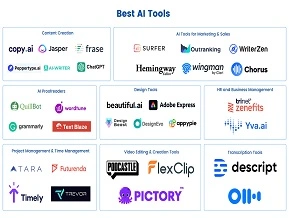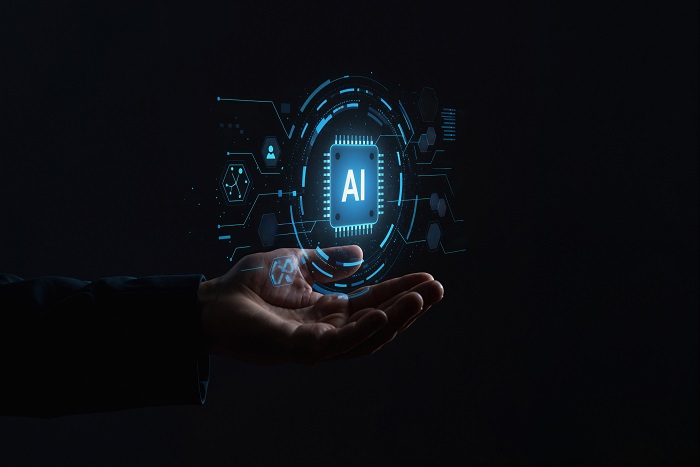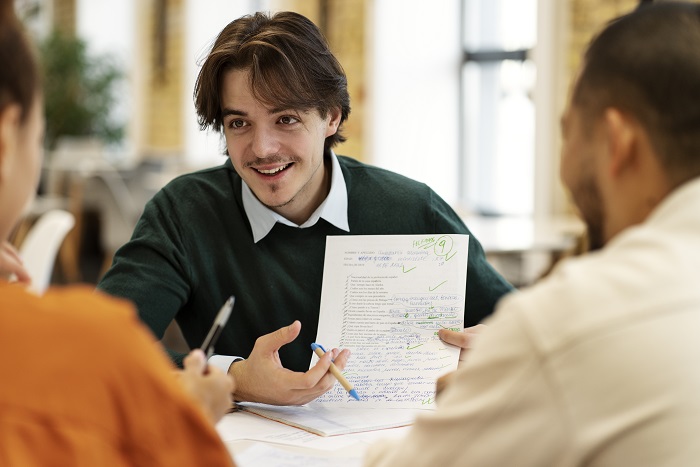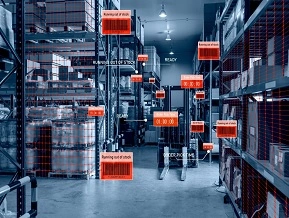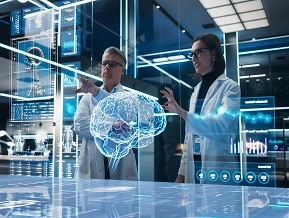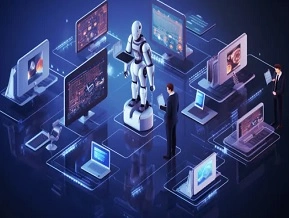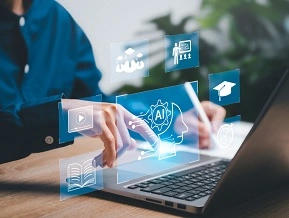Top 10 Image Creation AI Tools you Should Try in 2025
What is Image Creation AI and How Is It Revolutionizing Digital Art?
Image creation AI is transforming the landscape of digital art by enabling machines to generate realistic, imaginative, and high-quality visuals with minimal human input. This branch of artificial intelligence combines deep learning, neural networks, and generative models—such as GANs (Generative Adversarial Networks) and diffusion models—to produce original artwork, illustrations, and photo-like images. What was once the domain of skilled digital artists is now being revolutionized by algorithms that can learn artistic styles and produce stunning results in seconds.
From Code to Canvas: How AI Art Has Evolved
Traditional digital art requires manual input from graphic designers or illustrators who use tools like Photoshop or Illustrator to bring their ideas to life. In contrast, AI and image creation technology enables users to describe their vision in text (known as a prompt), and the AI generates the image accordingly. This shift not only accelerates the creative process but also democratizes it, allowing people with little to no artistic skill to produce compelling visuals.
Industry Applications and Impact
The impact of image creation AI is vast and growing. In graphic design, it’s used to generate concept art, logos, and layout ideas rapidly. In marketing, brands leverage AI tools to produce on-brand images for social media and campaigns without needing full design teams. In entertainment, AI helps with storyboarding, game asset creation, and even movie concept visualization.
Fashion, interior design, publishing, and e-commerce are also embracing AI-generated imagery for product mockups and personalization at scale.
By blending creativity with computation, this is not replacing artists—it’s expanding what's possible in visual storytelling and making artistic expression more accessible than ever before.
How Do AI and Image Creation Work Together to Transform Creativity?
AI and image creation are forming a powerful alliance that is redefining how we approach visual content. By combining artificial intelligence with artistic processes, creators are no longer limited by technical skills or time constraints. Instead, AI acts as both a tool and a collaborator—helping automate tedious steps while amplifying imaginative potential.
Automating and Enhancing the Creative Process
Traditionally, creating high-quality images required hours of manual design work. Now, image creation AI streamlines much of this effort. Artists can input a simple prompt, and AI will generate a visual concept in seconds. These tools are not just fast—they are highly adaptable. They can imitate styles, apply filters, correct lighting, and suggest variations that might not have occurred to the human eye.
This automation frees up creative professionals to focus more on ideation and storytelling, rather than getting bogged down in execution.
Core Technologies Behind the Art
The backbone of AI-powered image creation lies in advanced machine learning models, primarily Generative Adversarial Networks (GANs) and diffusion models. GANs work by having two networks—the generator and the discriminator—compete to improve image quality. Diffusion models, such as those used in tools like DALL·E or Midjourney, gradually build images from random noise, allowing for greater control over details and structure.
These models are trained on massive datasets of images, learning patterns, styles, textures, and forms. The result is the ability to generate images that are both novel and coherent.
Real-World Benefits for Creators and Businesses
For artists and designers, AI tools offer inspiration and rapid prototyping. For businesses, they provide scalable solutions for creating branded visuals, product mockups, and ad creatives—often at a fraction of the cost and time.
In short, the synergy between AI and image creation is unleashing a new era of creativity—one where human imagination is amplified by machine intelligence.
What Features Should You Look for in Image Creation AI Tools?
When selecting image creation AI tools, it’s important to evaluate several key features to ensure you get the best results tailored to your needs. With the growing number of AI-powered platforms available, understanding what to prioritize can help you choose a solution that balances creativity, efficiency, and ease of use.
User-Friendliness and Customization Options
A user-friendly interface is essential for both beginners and professionals. Look for tools that offer intuitive controls and clear workflows, allowing users to create images without steep learning curves. Customization options, such as adjustable style settings, color palettes, and the ability to input detailed prompts, enable users to tailor the generated content closely to their vision. Some tools even offer advanced controls for tweaking image resolution, composition, or specific artistic elements.
Quality of Generated Images and Style Variety
The core of any AI image creation tool lies in the quality of its output. High-resolution images with realistic details or artistic flair make a significant difference depending on the intended use. Additionally, style variety is crucial—whether you need photorealistic images, abstract art, cartoons, or specific art styles like impressionism or cyberpunk. Versatile AI tools can cater to diverse creative projects by supporting multiple styles and allowing users to switch easily between them.
Speed, Scalability, and Integration Capabilities
Efficiency matters, especially for businesses and professional creators who produce images regularly. Fast image generation speeds and the ability to handle batch processing or scale production are valuable features. Integration capabilities with popular design software, content management systems, or APIs allow seamless workflows across platforms, making it easier to incorporate AI-generated images into larger projects.
By carefully considering these features, you can select these tools that not only spark creativity but also fit your workflow and production demands.
Which are the Top 10 Image Creation AI Tools to Try in 2025?
The landscape of image creation AI tools is evolving rapidly, with a variety of platforms offering unique features tailored to different creative needs. Here’s a look at the top 10 AI tools you should try in 2025, each bringing something special to the table.
1. DALL·E 3
Developed by OpenAI, DALL·E 3 excels in generating highly detailed, photorealistic images from simple text prompts. Ideal for artists and marketers needing creative visuals quickly.
2. Midjourney
Known for its artistic and stylized outputs, Midjourney is popular among digital artists seeking unique aesthetics, from fantasy landscapes to abstract art.
3. Stable Diffusion
An open-source model famous for its flexibility and customization. It allows users to fine-tune models and integrate with various creative workflows.
4. Canva AI Image Generator
Canva’s AI tool is great for marketers and small businesses, combining image creation with easy-to-use graphic design features.
5. Adobe Firefly
Adobe’s AI-driven platform integrates seamlessly with Creative Cloud, offering powerful generative tools tailored for professional designers.
6. Runway ML
Runway ML targets creatives and developers by providing an accessible platform for AI-generated visuals and video editing.
7. Artbreeder
Specializes in collaborative image creation, allowing users to blend and evolve images, perfect for character design and concept art.
8. Deep Dream Generator
Offers surreal, dream-like artistic transformations using neural networks, favoured by experimental artists.
9. NightCafe Studio
Supports multiple AI models and styles, making it a versatile choice for hobbyists and professional creators alike.
10. Fotor AI
An all-in-one photo editing and AI generation tool ideal for quick content creation with a focus on social media visuals.
Each of these platforms showcases how ai and image creation technologies are transforming digital art—empowering everyone from hobbyists to professionals with powerful creative tools in 2025 and beyond.
How Do These AI Tools Compare in Terms of Image Quality and Usability?
When choosing image creation AI tools, it’s important to weigh their strengths in image quality, usability, pricing, and stylistic versatility. Each platform has its unique approach to balancing these factors, catering to different types of users.
Image Quality and Realism
Some AI tools like DALL·E 3 and Adobe Firefly excel in producing highly realistic and detailed images suitable for professional use. Others, such as Midjourney and Deep Dream Generator, focus more on artistic and stylized outputs that prioritize creativity over photorealism. Stable Diffusion offers flexible quality settings, enabling users to customize the level of detail depending on their project requirements.
Ease of Use and Customization
User-friendliness varies across platforms. Canva AI and Fotor AI provide intuitive interfaces that require minimal technical knowledge, making them ideal for beginners and marketers. In contrast, tools like Stable Diffusion and Runway ML offer more advanced customization and model fine-tuning, appealing to developers and professional artists who want more control over the creative process.
Pricing Models and Accessibility
Pricing can range from free tiers with limited features to subscription plans or pay-per-use models. Canva AI and Fotor AI offer affordable monthly subscriptions with generous usage limits, while platforms like Adobe Firefly and Midjourney typically require paid memberships for full access. Open-source tools like Stable Diffusion provide free access but may require more technical setup.
Support for Artistic Styles and Formats
Most AI tools support a broad range of styles—from photorealism to abstract and fantasy art. Platforms like Artbreeder excel in image blending and evolution, while NightCafe Studio supports multiple AI models, providing great versatility. Additionally, output formats vary, with some tools allowing high-resolution downloads suitable for print, while others focus on web-optimized images.
Overall, understanding your priorities in image creation AI—whether quality, ease, cost, or style—will help you select the right tool for your creative journey.
How are Professionals Using AI and Image Creation Tools to Boost Productivity?
Professionals across industries are increasingly leveraging ai and image creation tools to streamline their workflows and enhance creativity. These technologies are transforming how marketing teams, game developers, advertisers, and content creators produce visual assets, enabling faster delivery without compromising quality.
Applications in Marketing and Advertising
Marketing professionals use AI-powered image generators to quickly create eye-catching graphics for social media campaigns, email newsletters, and website content. For example, brands can generate multiple ad variations in minutes, allowing for rapid A/B testing and more effective targeting. AI tools help reduce reliance on expensive photoshoots and lengthy design processes, saving both time and budget.
Impact on Gaming and Entertainment
Game developers utilize AI image creation to prototype characters, backgrounds, and concept art rapidly. This accelerates the creative pipeline, allowing artists to iterate on ideas and experiment with different visual styles before committing to final designs. Some studios also use AI to generate textures and assets at scale, reducing manual labour.
Success Stories in Content Creation
Content creators and influencers harness AI tools to generate unique thumbnails, channel art, and promotional materials, often without hiring dedicated designers. For instance, YouTubers and bloggers report faster turnaround times and more engaging visuals, contributing to audience growth.
Reducing Creative Bottlenecks
By automating routine design tasks and generating initial drafts, AI helps professionals overcome creative blocks and focus on higher-level strategy and storytelling. This collaborative relationship between human creativity and machine efficiency is revolutionizing productivity across creative fields.
- Bottom of Form
What are the Ethical Considerations Surrounding AI and Image Creation?
As image creation AI tools become more powerful and widespread, several ethical concerns have emerged that creators, developers, and users must carefully consider. These issues touch on copyright, misinformation, and the broader responsibility of using AI technology wisely.
Copyright and Intellectual Property Issues
One of the most significant ethical challenges involves copyright. AI models are typically trained on vast datasets of existing images, many of which are copyrighted. This raises questions about the ownership of AI-generated images and whether the original artists’ rights are respected. Users and creators must navigate these complex legal areas to avoid infringement and ensure fair attribution.
Risks of Deepfakes and Misinformation
AI-generated images can be manipulated to create highly realistic fake visuals, known as deepfakes. While they have creative and entertainment uses, deepfakes also pose serious risks by spreading misinformation, creating fake news, or damaging reputations. Ethical AI use requires vigilance in preventing malicious applications and promoting transparency in AI-generated content.
Responsible AI Use and Future Regulations
Developers and organizations are increasingly emphasizing responsible AI development. This includes creating tools that detect manipulated images, ensuring datasets are ethically sourced, and fostering open discussions on AI governance. Governments and regulatory bodies are also exploring frameworks to address ethical concerns, aiming to balance innovation with protection against misuse.
In conclusion, the growth of image creation AI brings exciting possibilities but also ethical responsibilities. Awareness, regulation, and responsible practices will be essential to harness AI’s creative potential while safeguarding rights and trust in digital media.
Conclusion
Getting started with image creation AI tools is easier than ever. Beginners should begin by exploring user-friendly platforms like Canva AI or Fotor AI to experiment with generating art using simple prompts. Taking advantage of tutorials and learning resources helps build confidence and skills. At LAI, we offer comprehensive courses designed to guide you through AI creativity fundamentals and advanced techniques. Embrace curiosity and don’t be afraid to innovate—AI-driven art opens up limitless possibilities for creative expression and professional growth. Dive in today and transform your ideas into stunning visuals!

